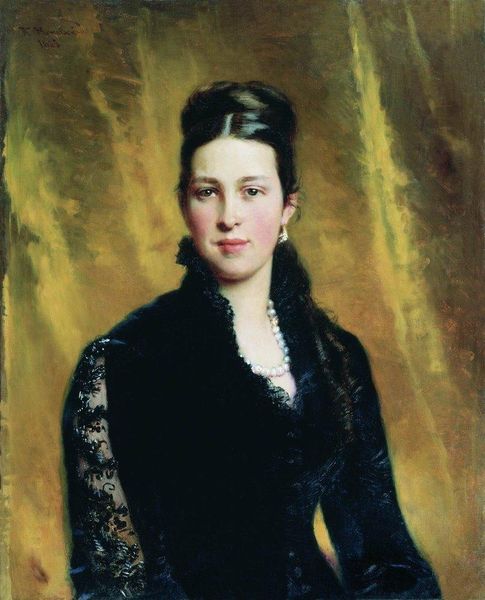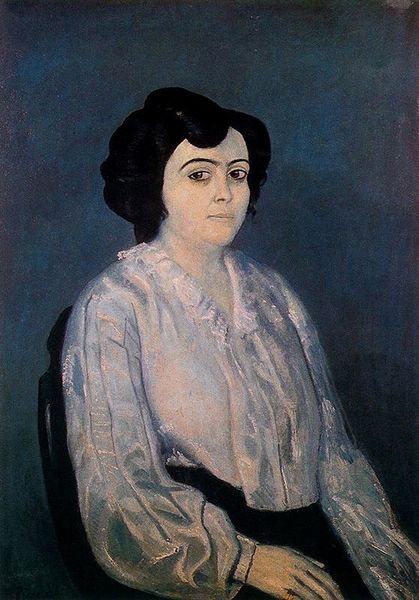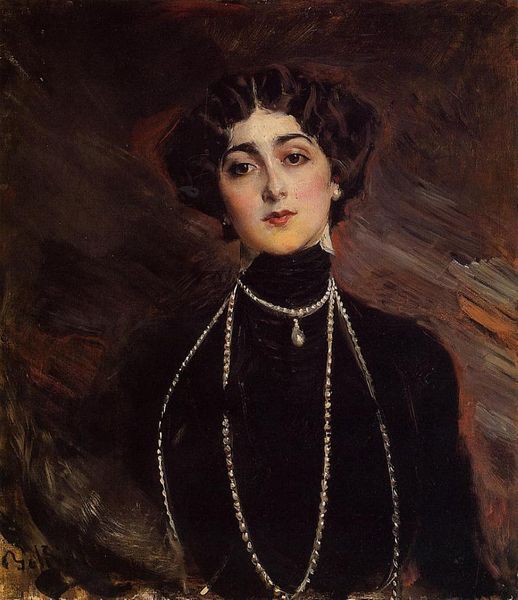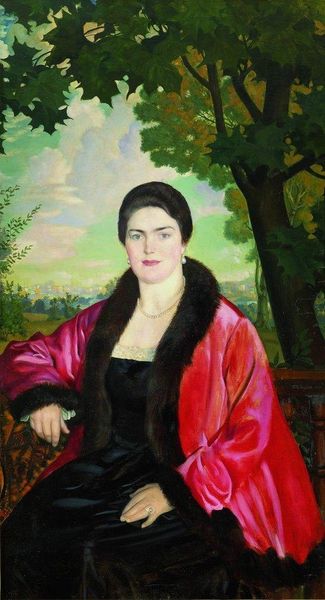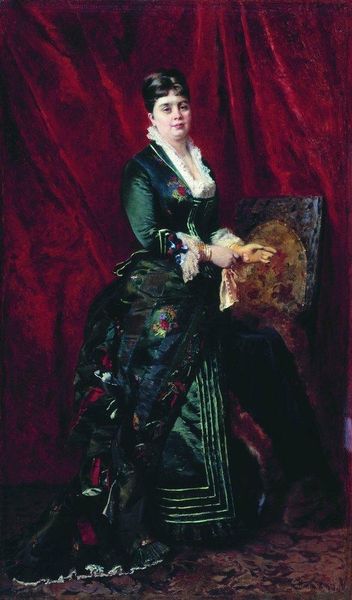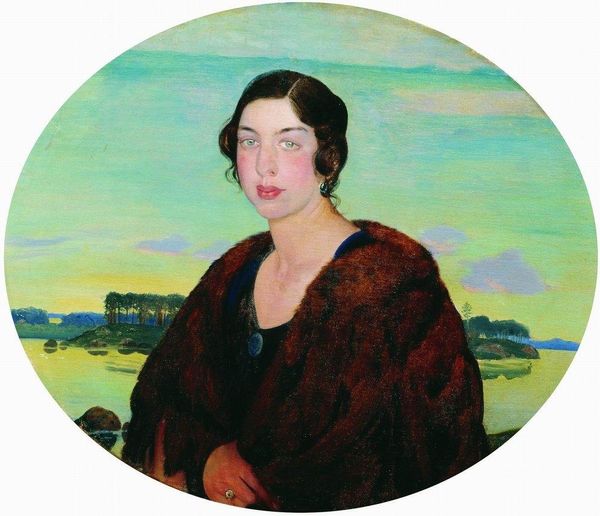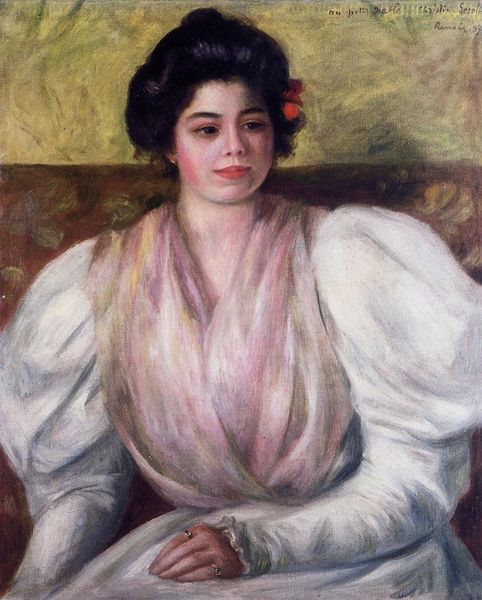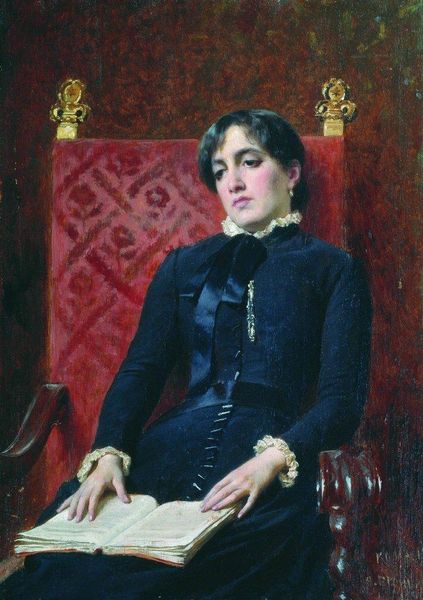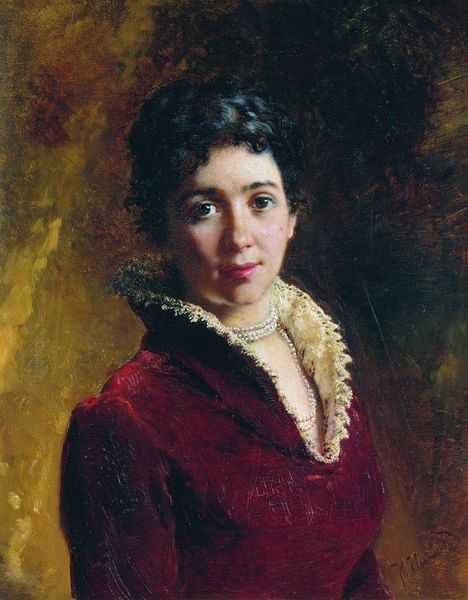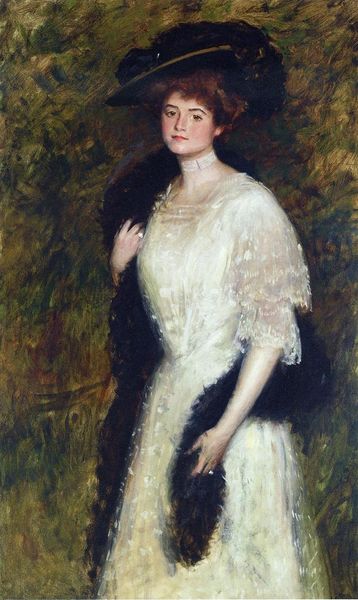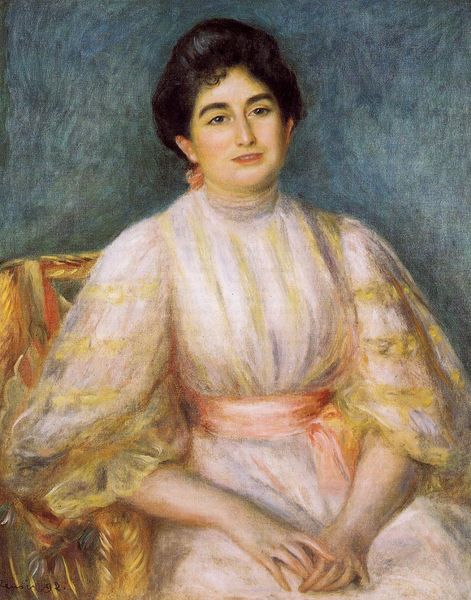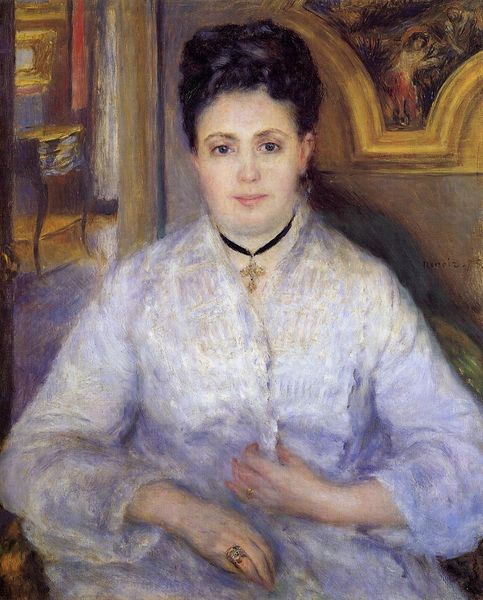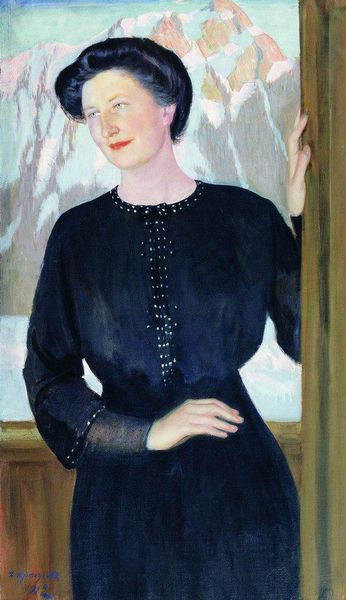
Copyright: Public domain
Curator: Welcome to this exploration of "Portrait of a Woman," painted in 1904 by Boris Kustodiev. Kustodiev, active during a time of significant social and political change in Russia, was deeply interested in capturing the essence of Russian identity through his art, even while working in the portrait style. Editor: Oh, my goodness, what a fascinating contrast! That brooding, stormy sky practically swallows up the formal, posed figure. I can almost feel the weight of that heavy shawl. Talk about dramatic irony—or is it just…mood? Curator: It's tempting to interpret the landscape as symbolic. Perhaps reflecting broader anxieties within the Russian aristocracy at the time, on the precipice of revolution. The artist frequently blended portraiture with landscape to situate his subjects within a broader social milieu. Editor: A premonition in purple, you think? Hmm, I love that the romantic figure set against an almost gothic backdrop, but what I feel is more that a collision of worlds. It looks like a snapshot of a person haunted by an ever-changing outside environment. Or maybe, the inner state mirrored in external chaos? I imagine wearing that dress wouldn't have hurt the feeling either. Curator: Well, the composition indeed plays a crucial role. Notice how the relatively subdued color palette, primarily hues of purple, and muted greens, underscores this more reserved representation. Kustodiev had studied under Ilya Repin, after all, and carried with him a tendency towards realism, even when engaging with more fashionable trends in portraiture. Editor: The way the green pops up against that purple is really electric though! Almost acidic. I do wonder, was it this fashionable, this dress? Because it seems almost absurdly luxurious against that gloomy background. Almost as if it's saying, "I refuse to be daunted." Curator: We should remember the patron and the artist agreed on how this painting should look! Ultimately this piece offers a valuable insight into not only Kustodiev’s painterly approach, but also provides visual information about Russian societal conventions in the early 20th century. Editor: True, there is a certain tension captured, it is less about capturing light than about trying to capture an environment with the individual fighting to find their space. Okay, my sociological assumptions aside, thank you, a beautiful picture is always an escape!
Comments
No comments
Be the first to comment and join the conversation on the ultimate creative platform.
